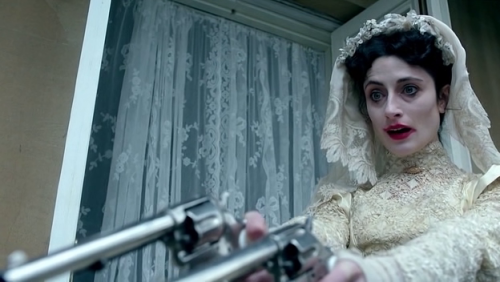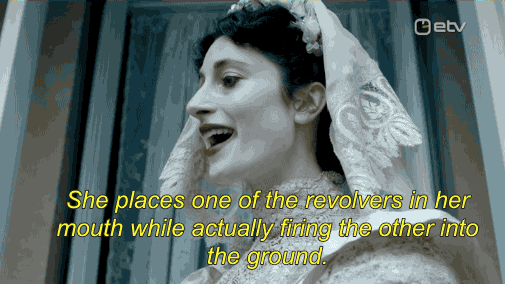At first glance, Laura Fairlie/Lady Glyde and the victim in the case of “The Abominable Bride” from the BBC Sherlock Christmas special set in Victorian England (Emelia Ricoletti) live out two very different situations.

Laura has survived, with Anne Catherick dying in her place; Emelia pretends to die in an attempt to (literally) get away with murder.


Anne and Laura are the victims of a plot; Emelia is the culprit of a plot. Emelia has one of her friends shoot her in the head after the murder so as to complete her alibi and for her corpse to be positively identified; Anne dies of heart failure and Laura continues to live. Both Anne and Laura have been in asylums; Emelia has never stepped foot in one – although her actions might qualify her for entrance.
All three women are clothed in white – Laura and Anne simply general white clothes, Emelia specifically in a wedding gown (hence the Abominable Bride moniker). All three women are wronged by a man: Laura and Emelia both faced abuse at the hands of their husband, while Anne is hunted down and shut away in an asylum by Glyde. Anne and Emelia were both sick, Anne with a condition of the heart and Emelia with consumption.

In the end, however, the most important correlation between the two stories is their focus on the rights of women. Emelia’s death opens the gate for other women to avenge their suffering at the hands of men, disguising themselves as her ghost to murder the men doing them wrong. Reading Marian’s perspective emphasizes the lack of rights held by women, and Hartwright’s quest is to reveal the wrongdoings of Glyde and the Count to save Laura and give her closure (His stated goal is to “vindicate [Laura] through all risks and all sacrifices” (Collins, 414)). He will not stand for their abuse of Laura, made possible by their patriarchal power over her and Marian. While it may not seem so at first, I believe that The Woman in White is indeed a feminist novel, arguing for increasing the rights of women, so as to prevent more terrible circumstances, like the ones Laura and Marian are forced to go through. I agree with wardka’s conclusions from their last post, that Wilke Collins is advocating for women’s rights.
(As a small aside, one interesting similarity between “The Abominable Bride” and The Woman in White are the mustachioed ladies: Marian is described as having a mustache, and Molly Hooper appears in male disguise during the special:
